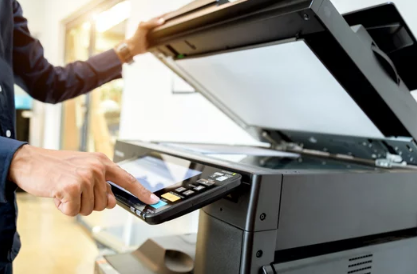Printers are essential tools at home and in the office—but they can also be incredibly frustrating when something goes wrong. Instead of spending money on professional repairs, many common printer issues can be resolved with simple DIY troubleshooting. This guide will show you how to save money, fix your printer at home, and keep it running smoothly with easy, practical solutions.
1. Start with a Basic Reset
Before diving into complex fixes, try the easiest solution that often works like magic: a full reset.
How to Reset Your Printer
- Turn off the printer.
- Unplug it from the power source.
- Wait 30–60 seconds.
- Plug it back in and power it on.
This clears temporary glitches and resets internal memory, solving errors like “Printer Offline,” “Job Stuck,” or unresponsive screens.
2. Check All Cable and Network Connections
Loose connections are the root cause of many printing errors.
For Wired Printers:
- Ensure the USB cable is securely plugged into both printer and computer.
- Try another USB port or cable if the connection is unstable.
For Wireless Printers:
- Make sure the printer is connected to your Wi-Fi network.
- Restart your router if the printer keeps disconnecting.
- Move the printer closer to the router for better signal strength.
Networking issues are extremely common and easy to fix without professional help.
3. Fix Paper Jams Quickly and Safely
Paper jams happen to even the best printers—and they’re usually simple to clear.
Steps to Remove a Paper Jam
- Turn off the printer.
- Open all access doors.
- Slowly remove jammed paper without tearing it.
- Check rollers for debris, torn bits of paper, or dust.
- Reload the tray with clean, properly aligned sheets.
Tip: Avoid using damp, curled, or damaged paper. It reduces jams drastically.
4. Clean Dirty Printheads or Cartridges
If your prints look faded, streaky, or incomplete, your printhead may be clogged.
Inkjet Printers:
- Go to Printer Settings > Maintenance > Clean Printheads
- Run the cleaning cycle 1–3 times
- Print a test page to confirm improvement
Manual Cleaning Method:
- Remove the ink cartridge.
- Gently wipe the printhead with a soft, lint-free cloth.
- Use warm distilled water for stubborn clogs (never alcohol).
Laser Printers:
- Shake toner cartridges gently to redistribute toner.
- Clean excess toner dust from inside the printer using a dry cloth.
5. Replace or Realign Ink and Toner Cartridges
Printers often malfunction when cartridges aren’t installed correctly.
DIY Cartridge Fixes:
- Reinsert any loose cartridges
- Remove protective tape from new cartridges
- Install compatible replacements if the printer rejects a cartridge
- Align cartridges via your printer’s maintenance settings
This simple step resolves many “Ink Not Detected” or “Cartridge Error” messages.
6. Clear the Print Queue
If print jobs are stuck, nothing will print—even if your printer is perfectly fine.
To Clear the Queue (Windows/Mac):
- Open the print queue
- Cancel all pending jobs
- Restart your computer and the printer
- Try printing again
A clogged print spooler can freeze your printer, but clearing it takes less than a minute.
7. Update or Reinstall Printer Drivers
Outdated or corrupted drivers cause communication issues between your computer and printer.
Fix Driver Issues by:
- Updating drivers from the manufacturer’s website
- Reinstalling the printer software
- Removing duplicate printer entries
- Restarting after installation
This is especially helpful after OS updates like Windows 11 or macOS upgrades.
8. Clean the Inside of the Printer
Dust, debris, and paper fibers can interfere with rollers and sensors.
How to Clean the Interior:
- Power off and unplug the printer
- Use a soft brush or compressed air to remove dust
- Avoid using liquids inside the machine
- Clean feed rollers with a damp (not wet) cloth
A clean printer lasts longer and performs better.
9. Replace Worn-Out Rollers
If your printer isn’t picking up paper, the rollers may be worn.
DIY Roller Fix:
- Locate paper feed rollers (usually gray rubber parts)
- Clean them with warm water to restore grip
- If cleaning doesn’t help, consider inexpensive replacement rollers
Replacing rollers is much cheaper than buying a new printer.
10. When to Avoid DIY Fixes
Some issues are too complex or risky for at-home repair:
- Burning smell or smoke
- Internal electrical damage
- Broken motherboard
- Fuser or drum failure
- Persistent error codes after multiple fixes
In these cases, consult a professional technician.
Final Thoughts
You don’t need to be a technician to fix common printer issues. With simple DIY troubleshooting, you can clear jams, improve print quality, fix connection issues, and maintain your printer without spending money on repairs. Regular cleaning, software updates, and proper handling can significantly extend your printer’s life and save you from costly replacements.
Also Read :
